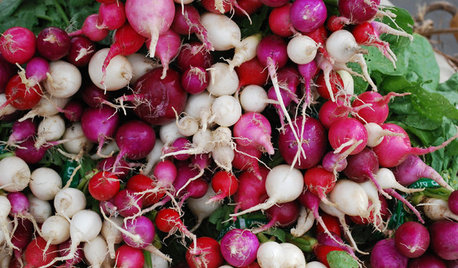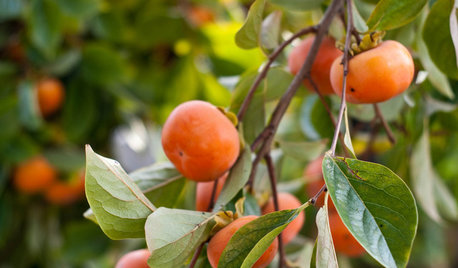Eating radish leaves and pigweed
happyday
15 years ago
Related Stories

COOL-SEASON CROPSCool-Season Vegetables: How to Grow Radishes
Fast growing and bright, these easy-care veggies are great for kids and bring plentiful color to a fall or spring garden
Full Story
HEALTHY HOME12 Ways to Set Up Your Kitchen for Healthy Eating
Making smart food choices is easier when your kitchen is part of your support team
Full Story
GARDENING GUIDES11 Favorite Edibles for Your Cool-Season Garden
Plant crunchy carrots, crisp radishes, tender peas and other vegetables for fall and spring harvests
Full Story
DECORATING GUIDESNature’s Color Wisdom: Lessons on Pink From the Great Outdoors
Leave your assumptions about pink at the princess playhouse door. Head outside instead for shades from shocking to subtle
Full Story
FARM YOUR YARD6 Things to Know Before You Start Growing Your Own Food
It takes time and practice, but growing edibles in the suburbs or city is possible with smart prep and patience
Full Story
EDIBLE GARDENSHow to Grow Your Own Sweet Summer Crops
This guide will help any gardener get started on growing the freshest warm-season veggies and berries for summer
Full Story
CALIFORNIA GARDENINGCalifornia Gardener's November Checklist
In a season of traditions, let's take advantage of California's familiar — as well as quirky — planting opportunities
Full Story
GARDENING AND LANDSCAPINGWorld of Design: 10 Home Gardeners Show Us Their Sweet Summer Harvests
From New York to Tokyo, these gardeners have turned their yards, terraces and rooftops into places of bounty
Full Story
GARDENING GUIDES10 Easy Edibles for First-Time Gardeners
Focus on these beginner-friendly vegetables, herbs, beans and salad greens to start a home farm with little fuss
Full Story
KITCHEN DESIGNHouzz Call: What’s Cooking in Your Kitchen?
Most of us turn to recipes, videos and culinary shows when we cook. Where do you set your cookbook, tablet or TV screen?
Full Story





pnbrown
aulani
Related Professionals
Foothill Ranch Landscape Architects & Landscape Designers · Havre de Grace Landscape Architects & Landscape Designers · Towson Landscape Architects & Landscape Designers · West Chester Landscape Architects & Landscape Designers · Roxbury Crossing Landscape Architects & Landscape Designers · Aloha Landscape Contractors · Beachwood Landscape Contractors · Fort Mill Landscape Contractors · Las Vegas Landscape Contractors · Lemont Landscape Contractors · Paterson Landscape Contractors · Pleasant Grove Landscape Contractors · Soddy Daisy Landscape Contractors · South Lake Tahoe Landscape Contractors · Cleveland Driveway Installation & Maintenancedangould
pnbrown
jackinthecountry
happydayOriginal Author
jimster
pnbrown
shot
lizzymills
pnbrown
jimster
happydayOriginal Author
pnbrown
jimster
pnbrown
rose_nutty
pnbrown
pnbrown